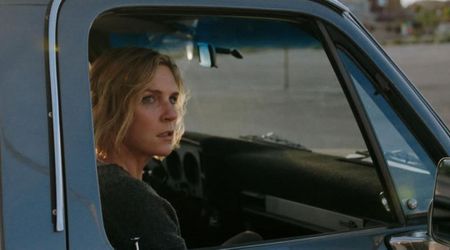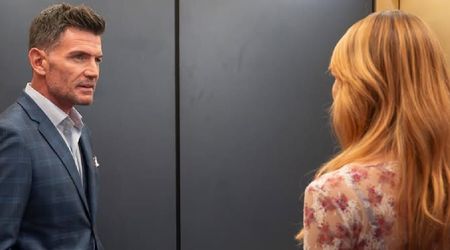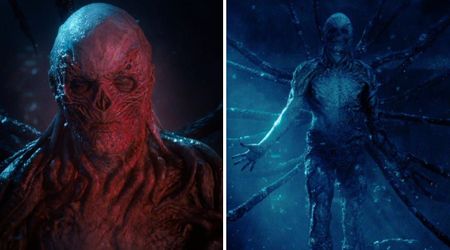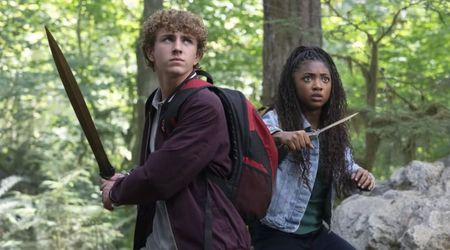'Enslaved' Episode 1: Powerful account of slave ships lost in sea, but hobbled by needless reenactments

In Episode 1, we see two equally powerful narratives intertwine — one of Samuel L Jackson, the "lost son of the tribe" returning safely back to his Benga tribe in West Africa, after his ancestral lineage was ruptured 250 years ago, after his great-grandmother, as a slave, took the surname of her master. His story is a continuation of the story of the Africans who did manage to survive the horrific journey over the ocean, shackled on slave ships.
The other narrative "dives" into the relatively untold story of those who didn't make it and died when the ships sank to the bottom of the sea. This part of the episode looks into the historical records of the British anti-slavery patrol ship, HMS Nimble, chasing Guerrero, a Spanish slave ship. After a gun battle, the Guerrero was wrecked on a reef near the Florida Keys. Forty-one of the Africans confined in the hold drowned as the Guerrero sank. Diving with a Purpose Underwater Archaeology Program, in conjunction with the National Park Service and the National Association of Black Scuba Divers, start their search for the Guerrero by referring to the records left by the logs of HMS Nimble, which help them pinpoint the general area where Guerrero ran into the reefs in the shallow waters. By the end of the episode, they find definite evidence of items thrown over by HMS Nimble like cannonballs to make the ships lighter in shallow waters. Soon after they find cannon ballasts with flatheads — a Spanish design — which convinces them that they are very close to or floating above Guerrero's wreckage.

The start of the episode is a little rocky, omitting in large part Samuel L Jackson's initial search of his lineage to one quick home visit that details of his family tree collected from mostly word of mouth accounts and some pictures left behind. But we don't see how the DNA tests are conducted or how most Black Americans have to resort to DNA testing to find which part of Africa their ancestors were trafficked from because any slave records kept were incidental and patchy, largely due to the fact that they were there only to facilitate their sale and trade, compared to records kept for White immigrants, which give detailed information on where they came from and why.
We are just told that Jackson's DNA testing showed that his ancestors came from the Benga tribe in the West African country of Gabon, whose rich rainforests provided rich plunder of natural resources, ivory, and stolen men and women. We are given briefly, the horrifying details about the Governor of the area, whose bedroom had a trapdoor leading straight to the dungeon where the women were kept, so that he could pick and choose a woman to rape whenever he wanted.
But after this choppy beginning, the episode settles into a better pace with Jackson visiting key sites of the slave trade along the Western African coast. The first stop is his homeland in Gabon from where his ancestors were taken where he is "re-initiated" into the Benga tribe and given the name "Nyetiti" or "Star", very appropriately. Jackson looks overwhelmed for most of it and sees little parts of himself in his people — like the way he walks for instance, which is a typical "Benga gait" developed over time and generations because they walked on sand all their lives. As Jackson puts it, the whole experience repairs a "broken link" in his lineage.
But the rest of his journey is not so joyous — like when he visits the islands in the lagoon where Africans were kept trapped, till the ships came to take them to Brazil, Cuba and America. With no food sources on the island, the only source of food was the oysters on the islands' edges. So many men and women were kept on these islands over the 300 years of slave trading, that human-height walls of oyster shells were built up, still visible on the banks of these islands. It is a horrifying sight once you know what it means.
On the other side of the ocean, the archaeologist in charge of the dive shows divers from the National Association of Black Scuba Divers some artifacts recovered from other slave ships like "2 by 2" shackles, used to link the ankles of two slaves together so that they could not move and a tooth extractor, used to remove teeth so that food could be forced down the throats of slaves refusing to eat. It is these sorts of visuals and artifacts and the people like the divers and Jackson reacting to them that make up the most powerful portions of this episode.

However, the reenactments of slaves being force-fed or drowning don't really serve a purpose because it feels demeaning to the memory of the people who actually lived through it. These sepia-sequences look contrived and frankly offensive because they depict Black people being tortured onscreen — which is footage we have seen too many times in real life already not to feel triggered. Instead, it is the reactions of the Black divers who remember and discuss what it must have felt like is far more effective in conveying the horrors of the slave trade. Some reenactments work a little better, for instance how the slave ships would have looked backlit by the horizon when the captured people first saw them and the ocean for the first time. Jackson puts it best when he says, "it looks like paradise but for a few decades, they were the gates to hell".
'Enslaved' premiered on Epix on Monday, September 14, at 10 pm ET.










